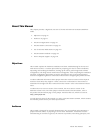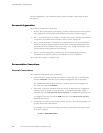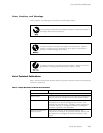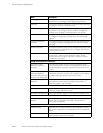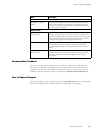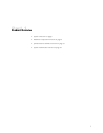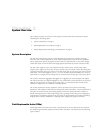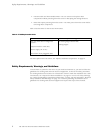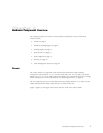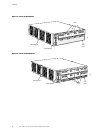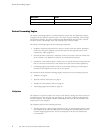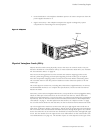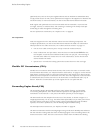Chapter 1
System Overview
This chapter provides an overview of the Juniper Networks M5 and M10 Internet routers,
discussing
the following topics:
• System Description on page 3
• Field-Replaceable Units (FRUs) on page 3
• Safety Requirements, Warnings, and Guidelines on page 4
System Description
The M5 and M10 Intern et routers provide high-speed interfaces for medium and large
networks and network applications, such as those supported by I nternet service providers
(ISPs). Application-specific integrated circuits (ASICs), a definitive part of the router design,
enable the router to forward data at the high speeds demanded by current network media.
The M5 router supports up to four Physical Interface Cards (PICs), and the M10 router
supports up to eight PICs. Each PIC accepts a specific type of network media, providing up to
16 physical interface ports per system on the M5 router and up to 32 por ts per system on the
M10 router. The router height of 5.25 in. (13.3 cm) enables stacked installation of 14 M5 or
M10 routers in a single floor-to-ceiling rack, for increased port density per unit of floor space.
The router’s maximum aggregate throughput is 6.4 gigabits per second (Gbps), full duplex.
The router provides very high throughput for any combination of PICs that does not exceed 3
Gbps for the M5 router or 6 Gbps for the M10 router. A combination that exceeds these
numbersissupported,butconstitutes oversubscription.
The router architecture cleanly separates control operations from packet forwarding
operations, which helps to eliminate processing and t raffic bottlenecks. Control operations in
the router are performed by the Routing Engine, which runs JUNOS Internet software to
handle routing protocols, traffic engineering, policy, policing, monitoring, and configuration
management. Forwarding operations in the router are performed by the Packet Forwarding
Engine, which consists of hardware, including A SICs, designed by Juniper Networks.
Field-Replaceable Units (FRUs)
Field-replaceable units (FRUs) are router components that can be replaced at the customer
site. Replacing most FRUs requires minimal router downtime. The router uses the following
types of FRUs:
System Overview
3



